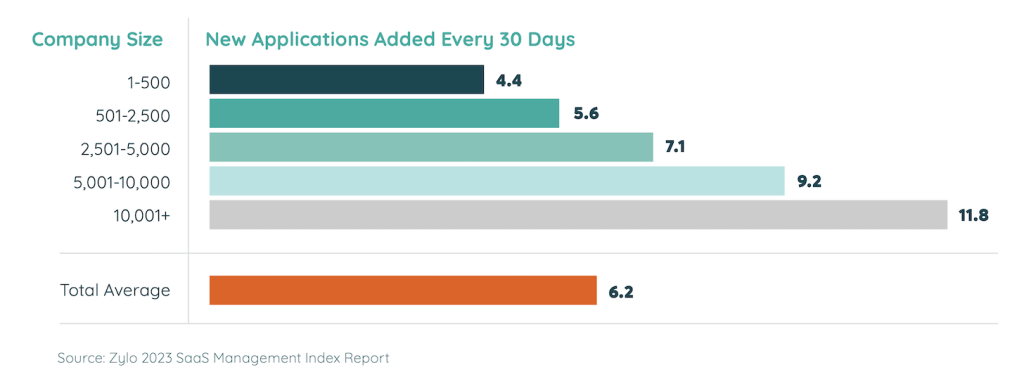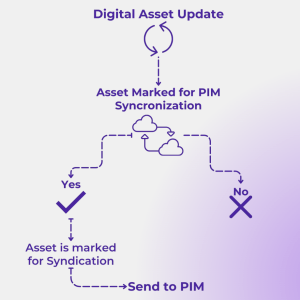In the ever-evolving business landscape, the need for streamlined processes and enhanced collaboration has never been more critical. Enter workflow automation and integration – the dynamic duo that not only promises increased productivity and improved performance but also catalyzes scalable growth. Workflow automation streamlines processes, obviously, but it offers much more in terms of productivity and performance. It is essential for both IT and marketing teams to function, and thrive. Integration across systems and applications is another essential in today’s world. Without integration, solutions cannot work effectively together and it negatively impact all aspects of business from productivity to customer experience to scalability and revenues.
Here’s how to avoid that.
At its core, workflow automation drives organizational efficiency. By automating repetitive tasks and eliminating manual work, you deliver enhanced productivity, improved performance, and pave the way for scalable growth.
Enhanced Productivity: Workflow automation eliminates the need for manual intervention in routine tasks. This frees up valuable time for more strategic and creative endeavors. Whether it's automating data entry or approval processes, teams can redirect their focus towards work that adds strategic value to the organization, and let the automation do the rest.
Improved Performance: Optimizing processes and standardizing best practices is where workflow automation adds big value. It reduces the number of errors and ensures consistency by eliminating manual processes.
Automated workflow delivers a level of precision that is difficult to achieve manually. This results in improved overall performance. Proactive monitoring and reporting further contributes to refining processes and optimizing performance.
Scalable Growth: As organizations evolve, the ability to scale operations and teams without proportional increases in resource requirements becomes imperative. Workflow automation provides the agility needed to integrate new products, markets, or channels seamlessly. It fosters collaboration across organizations and ensures growth doesn't come at the cost of efficiency.
● Infrastructure Management: IT teams can automate management of infrastructure components, ensuring seamless operation, and swift response to changing demands.
● Code Deployment: Automating the deployment of code releases reduces the risk of errors, accelerates the release cycle, and enhances the overall reliability of applications.
● Security Compliance: Workflow automation plays a crucial role in ensuring that security protocols are consistently applied across the organization. This reduces the risk of vulnerabilities and compliance issues.
● Campaign Execution: Automate the production and deployment of marketing campaigns via integrated martech solutions and workflow automation. Improve critical steps in campaign execution including email deployment, social media scheduling, and more. Workflow automation and integration ensures technologies work together to perform as needed.
● Content Syndication: For omnichannel commerce (everything is omnichannel today), automation streamlines areas essential for effective content syndication. This includes optimizing metadata and digital assets to enhancing product information for content syndication across platforms.
● Lead Management: Workflow automation assists in lead nurturing, scoring, routing, and then some. It ensures marketing efforts align with sales objectives and enables better reporting, insights, and ultimately, pipeline optimization.
The real power of workflow automation is when an organization's tech stack is tightly integrated. Integration allows for a holistic approach to managing technologies and platforms. IT teams need to implement, manage, and optimize technologies without relying on point-to-point integrations and custom code. This is especially true as organizations of every size rely on their technology stack to survive.
How many tech solutions or applications do teams rely upon today? In a mid-market organization (with 501 - 2,500 employees), an average of 255 apps are used. For enterprise organizations, double the amount of apps are used according to an article in Chief MarTech. And, more are added every 30 days.

Ownership and spending of the solutions no longer rests solely on IT teams. In fact, according to the Zylo 2023 SaaS Management Report, the bulk of the spend (63%) and the number of subscriptions (45%) are paid for by business units. This means IT teams, business units, and individuals share responsibility for the budget and management of technology these days.
Without workflow automation and integration across solutions, functionality, performance, and scalability of applications are at risk. What workflow applications and integrations are most commonly used? It depends on the business.
However, organizations today rely heavily on content, data, and associated assets to market and sell products. Even organizations that don’t typically “sell products” like museums or educational institutions rely on digital assets for search and archival of important collections and collaboration across teams. Workflow automation should be part of any solution. Some of the most common are listed below.
Scaling to eCommerce platforms and marketplaces is not just for B2C organizations. Teams need to syndicate product data and assets to new commerce platforms and marketplaces easily. Simplified workflow automation between a syndication solution like Syndigo to Shopify or Salesforce Commerce Cloud ensures a unified customer experience. It removes the burden of manual updates, synchronization, and format challenges for each platform.
Integration is crucial for scalability, meeting evolving marketplace requirements, and customer expectations.
Marketing teams dealing with vast amounts of product information and digital assets rely on integration. An integrated workflow streamlines content creation, distribution, and ensures consistency across channels.
Integrations between solutions like inriver or Salsify, Bynder, Aprimo, and others are quickly enabled via pre-built flow templates that are ready to use. This helps speed time to value for both applications and maximize efficiency for the end-user.
To enable workflow automation and integration at scale, teams need a simplified solution. Choosing an integration platform as a service (iPaaS) that powers this may seem easy, however, there are many options available. Selecting a no-code solution like OneTeg can be a game-changer for your team and organization.
OneTeg simplifies the complexities associated with workflow automation and integration. It facilitates the entire ecosystem in one single platform. The bonus? A user-friendly interface that doesn't require a development background.
The OneTeg solution is designed for business users and IT teams alike to speed time to value, integrating core applications like product information management (PIM), digital asset management (DAM), and more.

It’s time to take the complexity out of workflow automation and integration. Use OneTeg to unlock the full potential of automation without the need for costly, and resource-intensive coding. Imagine increasing team productivity while speeding up time to value. It’s possible when you leverage the power of OneTeg.
Schedule a demo of a PIM + DAM sample workflow template today and get started.